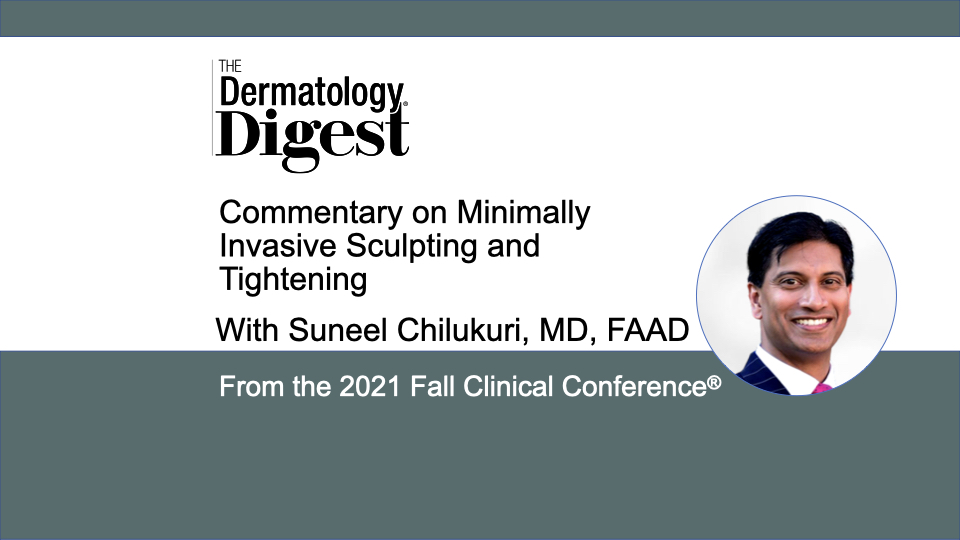Dr. Suneel Chilukuri discusses a specific technique and technology for nonsurgical facial sculpting and tightening.
From the 2021 Fall Clinical Dermatology Conference®
Suneel Chilukuri, MD, FAAD, is Director of cosmetic surgery at Refresh Dermatology in Houston, Texas.
“Radio frequency has been around for almost 50 years, and we continue to evolve, what we can do with it. This particular technology uses a single needle—sometimes up to three needles—to really sculpt the skin on the face as well as the neck,” said Suneel Chilukuri, MD, FAAD, who presented “Minimally Invasive Sculpting and Tightening” at this year’s Fall Clinical Dermatology Conference® in Las Vegas.
“And we’re not just sculpting skin. Now we’re actually using muscle.”
Instead of using sutures, Dr. Chilukuiri said, this focused RF device (Agnes RF; Aesthetic Management Partners) uses heat to fuse the facial muscle, tissue, and skin to achieve a similar result.
“I’m using heat to basically fuse the epidermis and dermis, the subcutaneous fat to the superficial muscle, and then to the SMAS, and then down to the sternocleidomastoid.”
This technique provides a real solution for the aging neck and jawline, said Dr. Chilukuri.
“If we put this all together with the other tools that we have, which include HA fillers, calcium hydroxylapatite, PLLA —Sculptra—and our PDO and PLLA threads. Now, we’re hitting home runs.”
From start to finish, the procedure takes around an hour, including prep and photos, but only 10 to 15 minutes to perform the actual treatment. Downtime, he said, is 3 days or less and only because of initial swelling.
“We’ll see results immediately, and that’s what we’re finding that’s the most amazing part for patients because with some of the other techniques that we use, there’s pretty tremendous swelling, there’s a lot of pain.”
Dr. Chilukuri gives patients what he calls it the “halftime show” while they’re on the table.
“We sit them up. We show them in a mirror. You can see the entire jawline, the face, and the neck has been lifted up. But again, without surgery.”
Local anesthetic keeps patients comfortable and the procedure is simple enough that anyone who can perform a biopsy can do it, according to Dr. Chilukuri.
Results are impressive, but how long so they last?
“As long as you have birthdays, it’s not going to last forever. That’s for sure,” Dr. Chilukuri joked. “What we do find is with a single treatment, there’s going to be some improvements over the next 3 months.”
Results depend on the individual patient’s skin laxity and quality. Results can be enhanced with additional treatments spaced 6 to 8 weeks apart.
“If we do nothing after 2 treatments, we see that there’s an improvement that occurs over the next 6 to 7 months, and then we can use nonsurgical, non downtime-type procedures to continue to enhance those results.”
That may mean performing a bulk heating procedure 4 to 6 weeks later for combined RF ultrasound or using a nonablative erbium YAG laser to address skin texture, Dr. Chilukuri said.
“So for all these patients that we’re treating, we’re taking them from a restorative phase to a maintenance phase, and that maintenance phase can be starting anywhere from 6 to 9 months or even to a year.”


